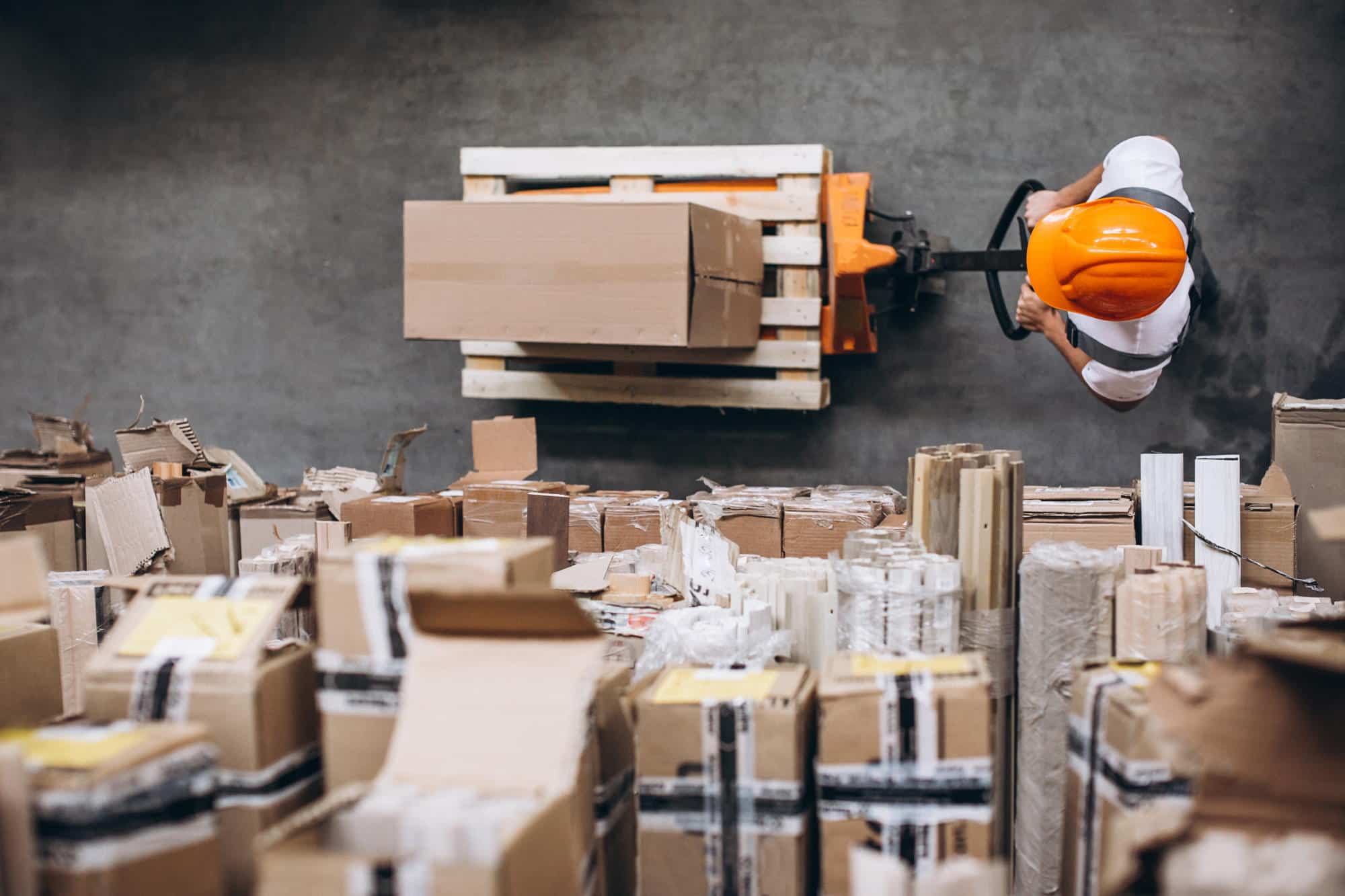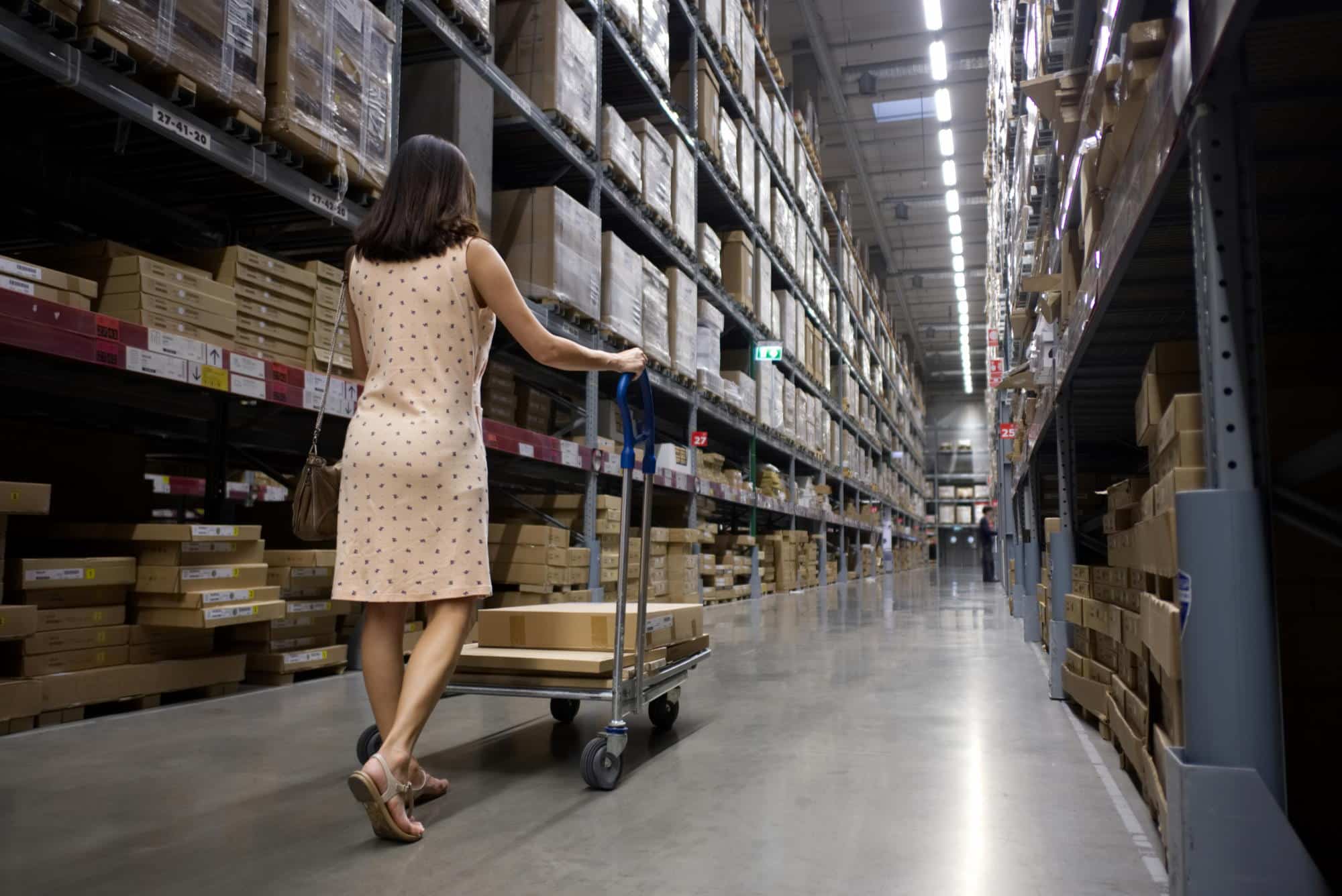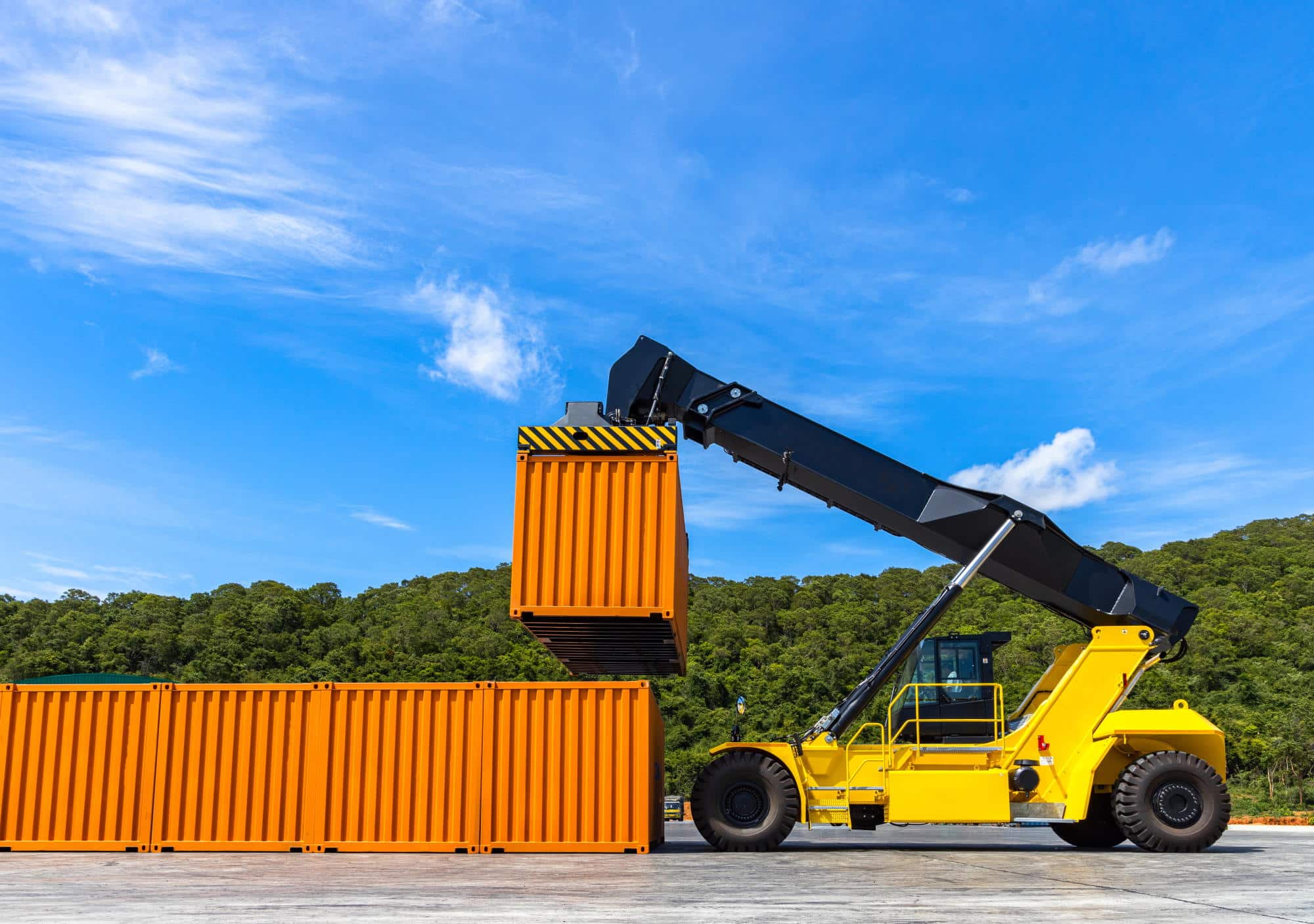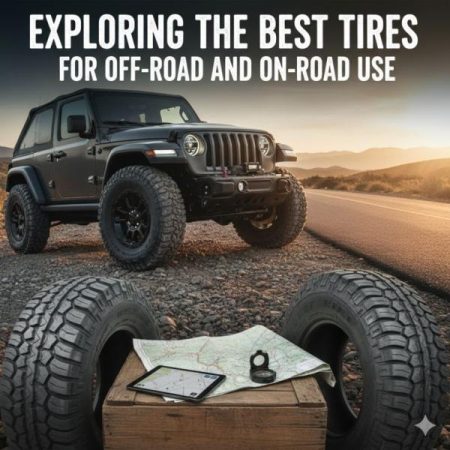If you have heavy items to move around your workplace, then you’ll benefit from materials handling equipment. They range in size from being able to carry a couple of hundred kilograms through to a hundred tonnes or more. Materials handling equipment reduces injuries and improves efficiency. Here is a selection of equipment from small to large.
Hand truck
This is a two-wheeled trolley used for carrying boxes and regularly shaped items. They are quick to learn how to use, easy to carry in vans and trucks, don’t take up much space and some can carry several hundred kilograms. They do require some level of fitness from the operator who will be lifting or stacking boxes on and off the hand truck.
Pallet jacks

A pallet jack is the next step up from a hand truck. Whereas with a hand truck you’re likely to take a few boxes from a pallet and move them somewhere else, the manual pallet jack moves the whole pallet. Simply insert the forks, pump the hydraulic handle and the forks lift a few centimetres off the ground – enough to manoeuvre the pallet around a warehouse (assuming the floor is smooth). They require some level of fitness from the operator as they need to be pushed or pulled. They are not good on ramps and slopes. A strong driver will be able to lift a pallet jack into the back of a truck (or a taillift can be used), which can speed up loading and unloading.
Wheeled cages and trolleys

A trolley is usually a four-wheeled platform with a tow handle, while a wheeled cage is similar but with a cage around it to minimise the risk of items falling off.
Electric tugs
Electric tugs can be used to tow a chain of trolleys or wheeled cages. They are small and manoeuvrable, and easy to drive. Where there are ramps or gradients, they can tow a number of trolleys behind them.
Powered pallet jacks
A powered pallet jack is powered by a battery, but otherwise has the same features as a manual pallet jack. It reduces the strain on the operator because they don’t have to pull or push it, and it provides better control on a gradient.
Walkie stackers

The next level up from a powered pallet jack is a battery-powered walkie stacker (sometimes called a jiffy, walkie, electric pallet jack or pedestrian-operated forklift). These have forks and can lift onto shelving or racking. The operator either walks with the unit or sometimes there’s a ride-on platform at the rear.
Order pickers
Order pickers are classified as powered industrial lift trucks. They are an elevating platform, but aren’t a scissor lift. The operator goes up on the platform to pick items directly from the shelf. The operator will have the same training as for forklifts, but will need to wear a harness while operating it.
Forklifts

The most common type of lift truck, the forklift is versatile and comes in many different configurations for the types of loads it needs to lift. At the light end, a forklift could have a rated capacity of around 1800kg, and at the heavy end, it could be 80 tonnes or more. They are powered by battery, hydrogen, diesel, petrol or LPG. Operators are required to have a forklift licence to drive them.
Large specialist machinery
Beyond a requirement to move around palletised freight or individual boxes, there are companies that will move containers and loads that are either very heavy or have awkward shapes.
Empty container handlers
This type of machine has a tall mast, like a forklift, but has a spreader bar on top to grab empty containers and stack them up to five high.
Reach stackers

Reach stackers have an arm with a spreader bar which can lift full containers onto the back of trucks or into locations where a crane or straddle carrier might take over, or they can stack containers on top of one another up to five high. They can move containers short distances very quickly.
Straddle carriers
Large straddle carriers are mostly used at ports and can carry two containers, but smaller versions are available that carry just one container.
Mobile gantry cranes
A mobile gantry crane provides lifting power for large or awkward loads with the ability to slowly manoeuvre to another location.
Sideloader
A sideloader, also called a Swinglift, uses two folding cranes on the side of a skeletal trailer to lift a container on or off for road freight. This trailer is pulled by a tractor unit and can immediately take to the road for efficient transport.
Materials handling equipment can be dangerous, so ensure your team are trained in its safe operation.






